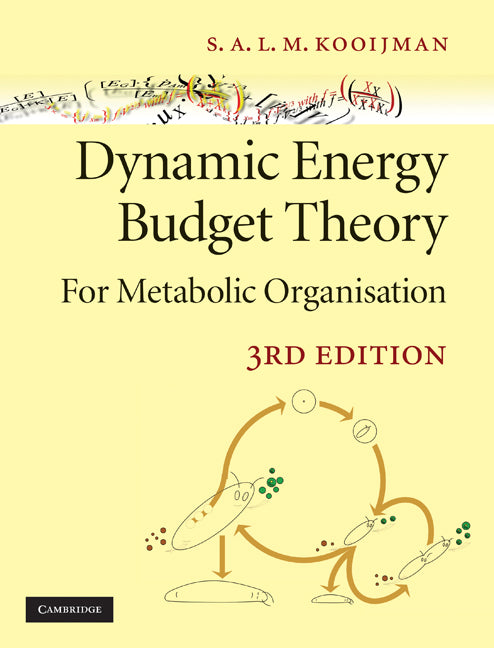Freshly Printed - allow 8 days lead
Couldn't load pickup availability
Dynamic Energy Budget Theory for Metabolic Organisation
The Dynamic Energy Budget theory unifies the commonalities between organisms and links different levels of biological organisation.
Bas Kooijman (Author)
9780521131919, Cambridge University Press
Paperback, published 15 October 2009
532 pages, 27 tables
24.7 x 19.1 x 2.5 cm, 1.14 kg
'Theoretical ecologists and mathematicians with an ecological bent should find much to consider in this book.' Bulletin of the British Ecological Society
The Dynamic Energy Budget theory unifies the commonalities between organisms, as prescribed by the implications of energetics, and links different levels of biological organisation (cells, organisms and populations). The theory presents simple mechanistic rules that describe the uptake and use of energy and nutrients and the consequences for physiological organisation throughout an organism's life cycle, including the energetics of ageing and contact with toxic compounds. This new edition includes a new chapter on evolutionary aspects, and discusses methods to quantify entropy for living individuals, isotope dynamics, a mechanism behind reserve dynamics, and toxicity of complex mixtures of compounds. An updated ageing module now also applies to demand systems, new methods for parameter estimation, adaptation of substrate uptake, the use of otiliths for reconstruction of food level trajectories, the differentiated growth of body parts (such as tumours and organs) linked to their function, and many more topics.
Preface
1. Basic concepts
2. Standard DEB model in time, length and energy
3. Energy, compounds and metabolism
4. Univariate DEB models
5. Multivariate DEB models
6. Effects of compounds on budgets
7. Extensions of DEB models
8. Co-variation of DEB parameter values
9. Living together
10. Evolution
11. Evaluation
Bibliography
Glossary
Notation and symbols
Taxonomic index
Subject index.
Subject Areas: Conservation of the environment [RNK], Animal ecology [PSVS], Plant ecology [PSTS], Mathematical modelling [PBWH]


